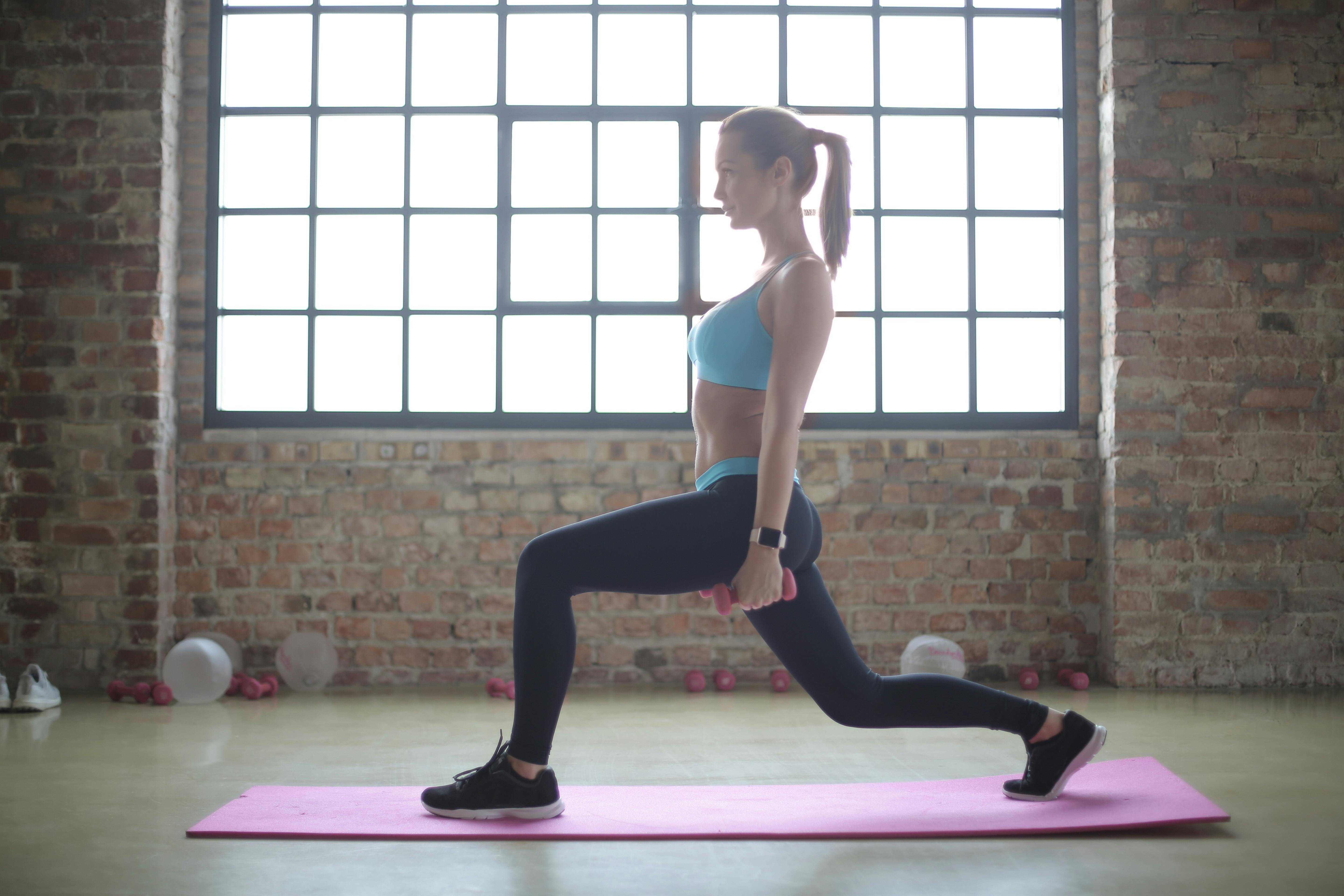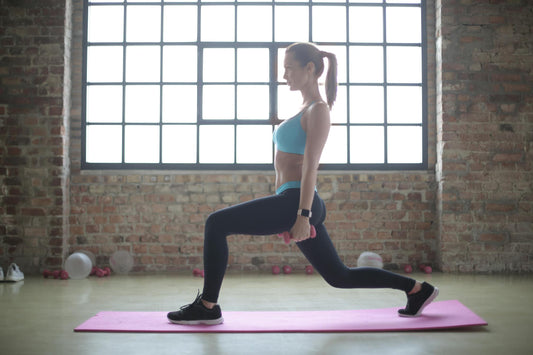
Imagine your glutes as the powerhouse muscles that keep you moving through life. Whether it's standing up from a chair, running down the street, or carrying groceries, your glutes play a crucial role in almost every movement you make. But what happens when these muscles are neglected? Weak glutes can lead to more than just a saggy backside—they can cause pain in your lower back, hips, and knees, and even affect your overall mobility.
They provide stability for your entire lower body and power you to go through your day. If you're someone who spends a lot of time sitting, this might be especially relevant to you. Sitting for long periods can weaken your glutes, making everyday tasks like getting out of a chair more challenging than they should be.
Understanding the Glute Muscles
Before we get into the exercises, let's break down what exactly we're talking about when we say "glutes." Each cheek is made up of three different muscles: the gluteus maximus, gluteus medius, and gluteus minimus. The gluteus maximus is the largest and most superficial of the three, responsible for extending and rotating your hip. Beneath it lies the gluteus medius, which helps stabilize your pelvis during movement. Finally, the smallest but no less important is the gluteus minimus, which assists in abduction (moving your leg away from your body).
When these muscles aren’t used enough, they can become weak, leading to imbalances and increased pain in other parts of your body. For example, if your glutes aren’t strong enough to support your hips, your lower back has to pick up the slack, resulting in discomfort or even injury. By incorporating specific exercises into your routine, you can activate and strengthen all three glute muscles, improving your overall function and reducing the risk of injury.
The Key to Stronger Glutes: Less Sitting, More Moving
One of the simplest ways to start strengthening your glutes is by sitting less. According to Feakes, "People generally spend way too much time sitting during the day. We have to make sure we’re getting up and moving around." Prolonged sitting can deactivate your glutes, making them weaker over time. So, before you even hit the gym or roll out your yoga mat, commit to taking regular breaks from sitting. Set reminders on your phone, invest in a standing desk, or simply walk around during commercial breaks while watching TV. These small changes can make a big difference in keeping your glutes engaged throughout the day.
Top Exercises for Glute Strength
1. Supine Bridges
Supine bridges are a fantastic exercise for engaging your entire gluteal region, along with your abs and lower back. They're also great for your core, making them a well-rounded move for strengthening that area of your body.
How to Do It: Lie on your back with your knees bent and feet flat on the floor, hip-width apart. Keep your arms at your sides with palms facing down. Lift your hips toward the ceiling until your body forms a straight line from your knees to your shoulders. Hold for a few seconds, then slowly lower back down. To increase the intensity, hold a small weight on your hips or bring your hands to your belly for added resistance.
2. Hip Thrusts
Hip thrusts are another excellent exercise for targeting your gluteus maximus, as well as the medius and minimus. While the maximus does most of the work, the other two muscles are engaged as stabilizers, ensuring a full-body workout for your glutes.
How to Do It: Sit on the ground with your back against a bench or stable surface. Place a barbell or dumbbell across your hips (optional) and position your feet shoulder-width apart. Drive through your heels to lift your hips until your body forms a straight line from your shoulders to your knees. Lower back down and repeat.
3. Walking Band Abduction
Side-to-side movements are essential for recruiting the gluteus medius and minimus. Adding a resistance band to the mix increases the challenge, helping you target those deeper muscles.
How to Do It: Place a resistance band just above your knees. Stand with your feet hip-width apart and step sideways, keeping tension on the band. Take small steps to maintain control and avoid letting the band lose tension. Walk 10-15 steps in one direction, then reverse and return to your starting position.
4. Fire Hydrants
Fire hydrants are a great way to isolate and strengthen the gluteus medius and minimus. This exercise improves hip mobility and range of motion, making it perfect for anyone looking to enhance their athletic performance or reduce pain in their lower body.
How to Do It: Start on all fours with your wrists directly under your shoulders and knees under your hips. Keeping your knee bent at a 90-degree angle, lift one leg out to the side, stopping when your thigh is parallel to the ground. Lower back down and repeat. Be mindful of your form; stop if you feel fatigued and unable to maintain proper alignment.
5. Clamshells
Clamshells are a gentle yet effective exercise for opening up your hips and using all three glute muscles. They're particularly beneficial for individuals dealing with lower back or knee pain, as they help build strength without putting excessive strain on those areas.
How to Do It: Lie on your side with your knees bent and feet together. Keeping your feet touching, lift your top knee as high as you can without moving your pelvis. Lower back down and repeat. For an extra challenge, add a light resistance band around your thighs.
6. Reverse Dumbbell Lunges
Lunges are a staple in any lower-body workout routine. They primarily target your gluteus maximus but also engage your quads, making them a versatile exercise for building strength and balance.
How to Do It: Stand with your feet hip-width apart and hold a dumbbell in each hand. Step backward with one foot, lowering your body until both knees are bent at approximately 90 degrees. Push through the heel of your front foot to return to the starting position. You can alternate legs with each repetition to improve balance and stability.
7. Seated Leg Press Machine
If you have access to a gym, the seated leg press machine is a great tool for working your quads, hamstrings, and glutes. It allows you to focus on each muscle group individually while gradually increasing the weight.
How to Do It: Adjust the seat so your knees are slightly bent when your feet are placed on the platform. Choose a weight that lets you complete three sets of eight to 12 repetitions without feeling overly fatigued. As you push the platform away from you, ensure your back remains flat against the seat.
8. Seated Abduction Machine
The seated abduction machine targets your hips and glutes by using weight resistance as you push your legs apart. This exercise specifically engages your gluteus medius and minimus, helping to strengthen these often-overlooked muscles.
How to Do It: Sit on the machine with your back against the pad and place your feet on the ankle rests. Slowly push your legs outward against the resistance, then return to the starting position. Like with the leg press, start with a lighter weight and gradually increase as you become stronger.
Practical Tips for Incorporating Glute Exercises Into Your Routine
- Start Small: If you're new to glute exercises, begin with bodyweight movements like bridges and clamshells. Once you feel comfortable, gradually add resistance with weights or bands.
- Focus on Form: Proper form is crucial to prevent injury and ensure you're targeting the right muscles. If you're unsure about your technique, consider working with a qualified personal trainer.
- Mix It Up: Variety keeps workouts interesting and challenges your muscles in different ways. Try combining these exercises with other lower-body movements like squats and deadlifts for a comprehensive workout.
- Listen to Your Body: Pay attention to how your body responds to these exercises. If you experience pain, stop immediately and consult a healthcare professional.
- Be Consistent: Like with any fitness goal, consistency is key. Aim to include glute exercises in your routine at least two to three times per week for optimal results.




